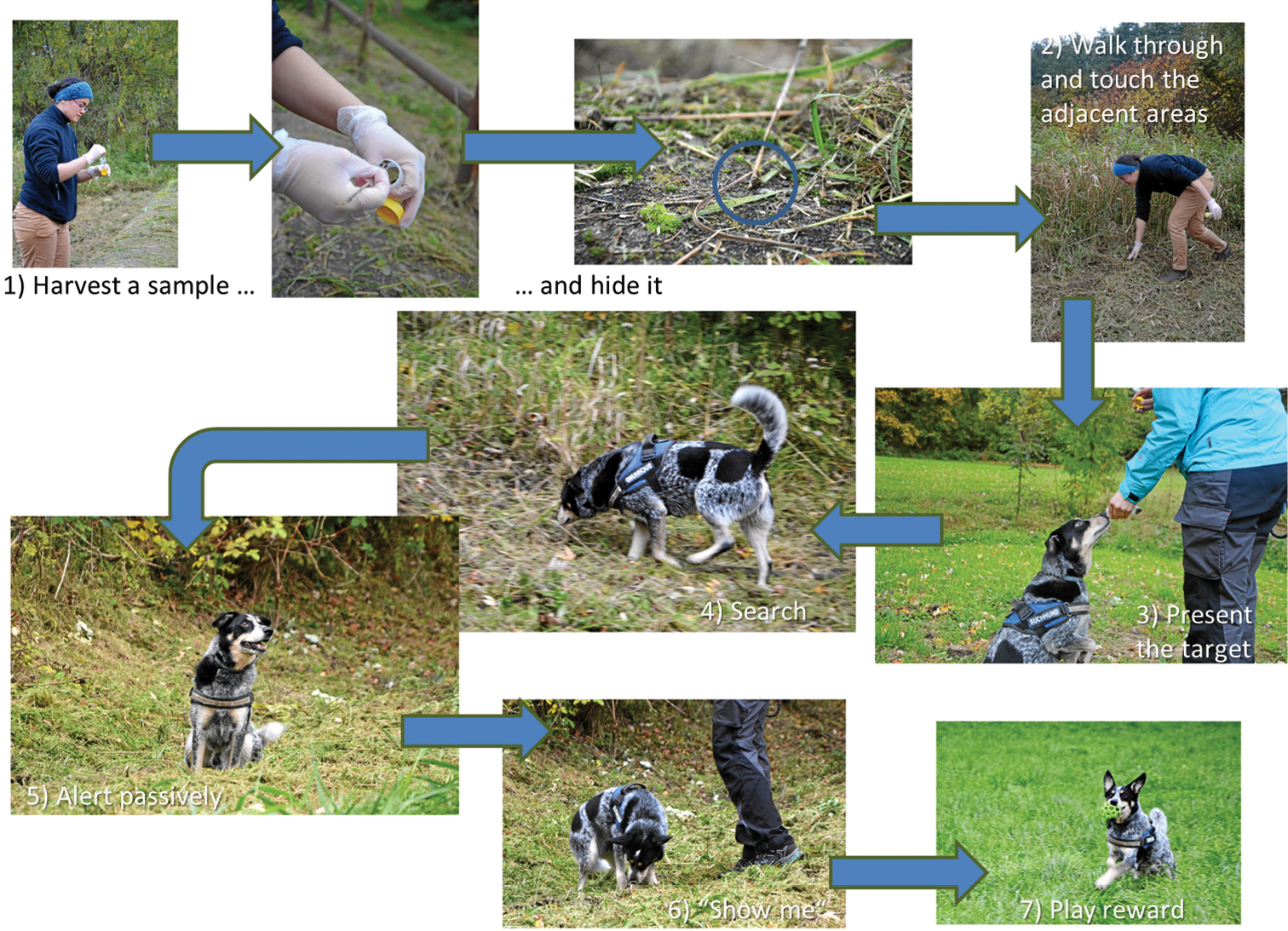
|
||
|
Chronology in the field training of the scat detection dogs, taking the example of the otter scat detection dog Bagheera. (1) A field assistant hid the scat using laboratory gloves and (2) walked through the search area a few times in order to cover up tracks out of sight of the handler. (3) Ritualised, the dog sat in front of the handler and the target scent was presented to the dog in a tube. (4) The dog was sent to search the area independently and (5) gave a passive alert (sitting or lying down, depending on the dog’s preferences) in front of the scat found. (6) We requested the command “show me” where the dog indicated precisely the source of scent through freeze-and-stare but was carefully trained not to touch the scat. The assistant would then indicate the handler whether this find was correct. (7) For each correctly found scat, the dog would be rewarded with a valuable treat (e.g. dried meat or favourite toy). Wrong alerts would be commented with “wrong” and the search would start again. |